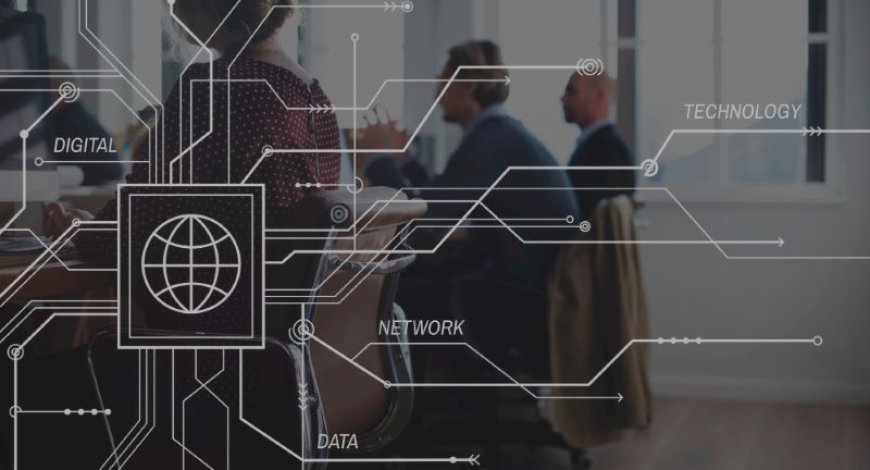A Comprehensive Guide to Internet of Things Development Services
Explore the transformative potential of Internet of Things development services. Learn how these services enhance efficiency, automation, and security.

In today's rapidly evolving tech landscape, the Internet of Things (IoT) stands at the forefront of innovation. Businesses and individuals alike are capitalizing on IoT to create interconnected systems that enhance efficiency, provide real-time insights, and improve overall quality of life. If you’re considering diving into this cutting-edge field, understanding internet of things development services is crucial. This guide explores what these services entail, their benefits, and how they can transform your operations.
What Are Internet of Things Development Services?
Internet of Things development services encompass a range of activities designed to create and implement IoT solutions. These services are crucial for developing connected devices, managing data, and ensuring secure communications between devices. Essentially, they bridge the gap between hardware and software to enable devices to communicate and operate intelligently.
Key Components of IoT Development Services Include:
-
IoT Solution Design: This involves the conceptualization and planning of IoT systems tailored to meet specific needs. It includes determining the hardware requirements, selecting the appropriate sensors, and designing the communication protocols.
-
Firmware Development: Firmware is the software embedded in IoT devices that controls their operation. Development services often involve creating robust firmware that ensures devices function correctly and efficiently.
-
Application Development: IoT applications are designed to manage and analyze the data collected by IoT devices. These applications provide user interfaces for monitoring and controlling devices, as well as analytics tools for data interpretation.
-
Cloud Integration: Many IoT solutions rely on cloud platforms to store and process data. Development services may include integrating IoT devices with cloud services to facilitate data storage, processing, and real-time analytics.
-
Security Solutions: Given the sensitivity of data handled by IoT devices, robust security measures are essential. Development services include implementing encryption, secure communication protocols, and other security features to protect against cyber threats.
Benefits of Leveraging IoT Development Services
Enhanced Efficiency and Automation
IoT development services allow businesses to automate processes and improve operational efficiency. By connecting various devices and systems, companies can streamline workflows, reduce manual intervention, and optimize resource utilization. For example, smart sensors in a manufacturing plant can automatically adjust machinery settings based on real-time data, leading to increased productivity and reduced downtime.
Real-Time Monitoring and Analytics
One of the most significant advantages of IoT development services is the ability to monitor systems and devices in real time. This capability provides valuable insights into performance metrics, usage patterns, and potential issues. Real-time analytics enable businesses to make informed decisions quickly, enhancing their ability to respond to changing conditions and optimize their operations.
Improved Customer Experiences
IoT solutions can significantly enhance customer experiences by providing personalized and responsive services. For instance, smart home systems can adapt to user preferences, offering tailored lighting, climate control, and entertainment options. Retailers can use IoT to track customer behavior and preferences, enabling them to deliver personalized offers and recommendations.
Cost Savings
Implementing IoT solutions often leads to substantial cost savings. By automating tasks and improving operational efficiency, businesses can reduce labor costs and minimize waste. Predictive maintenance enabled by IoT sensors can prevent costly equipment failures and extend the lifespan of machinery, further contributing to cost savings.
Scalability and Flexibility
IoT development services provide scalable solutions that can grow with your business. As your needs evolve, IoT systems can be expanded or modified to accommodate new devices, applications, and data sources. This flexibility ensures that your investment in IoT technology remains valuable over time.
Choosing the Right IoT Development Service Provider
When selecting an IoT development service provider, consider the following factors:
Experience and Expertise
Look for providers with a proven track record in IoT development. Their experience should encompass a range of projects and industries, demonstrating their ability to handle various challenges and requirements.
Technical Capabilities
Ensure that the provider has the technical expertise needed to develop and integrate IoT solutions. This includes proficiency in hardware design, firmware development, application programming, and cloud integration.
Security Measures
Given the importance of data security in IoT, choose a provider that prioritizes robust security measures. They should implement encryption, secure communication protocols, and other best practices to protect your data and devices.
Support and Maintenance
Ongoing support and maintenance are critical for the success of IoT solutions. Verify that the provider offers comprehensive support services, including troubleshooting, updates, and system enhancements.
Cost and Value
While cost is an important consideration, it should be weighed against the value provided. Assess the overall value of the services, including the quality of the solutions, the level of support, and the potential return on investment.
Future Trends in IoT Development Services
The field of IoT is continuously evolving, with new trends and technologies shaping its future. Some key trends to watch include:
Edge Computing
Edge computing involves processing data closer to the source rather than relying solely on cloud-based systems. This approach reduces latency, improves real-time data processing, and enhances the efficiency of IoT solutions.
Artificial Intelligence (AI) Integration
AI and machine learning are increasingly being integrated into IoT solutions to enable advanced data analytics and automation. AI-powered IoT systems can make intelligent decisions based on data patterns, enhancing their functionality and effectiveness.
5G Connectivity
The rollout of 5G networks is expected to revolutionize IoT by providing faster and more reliable connectivity. 5G technology will enable more devices to be connected simultaneously, improve data transfer speeds, and support more complex IoT applications.
Enhanced Security Protocols
As IoT devices become more widespread, the need for advanced security protocols will increase. Future developments will focus on implementing more robust security measures to protect against evolving cyber threats.
Conclusion
The Internet of Things is transforming the way we interact with technology, offering unprecedented opportunities for efficiency, automation, and innovation. Understanding and leveraging internet of things development services can position your business at the forefront of this technological revolution. By choosing the right development partner and staying informed about emerging trends, you can harness the full potential of IoT to drive growth and success.
What's Your Reaction?
 Like
0
Like
0
 Dislike
0
Dislike
0
 Love
0
Love
0
 Funny
0
Funny
0
 Angry
0
Angry
0
 Sad
0
Sad
0
 Wow
0
Wow
0


















































